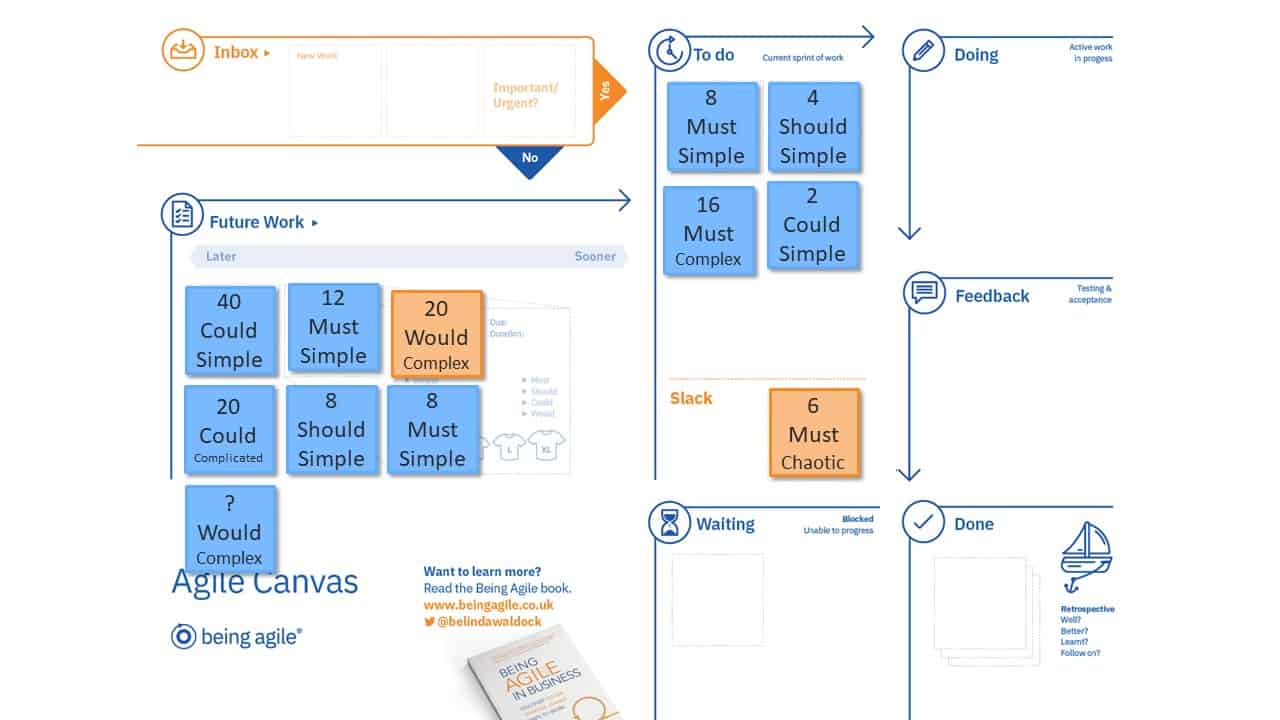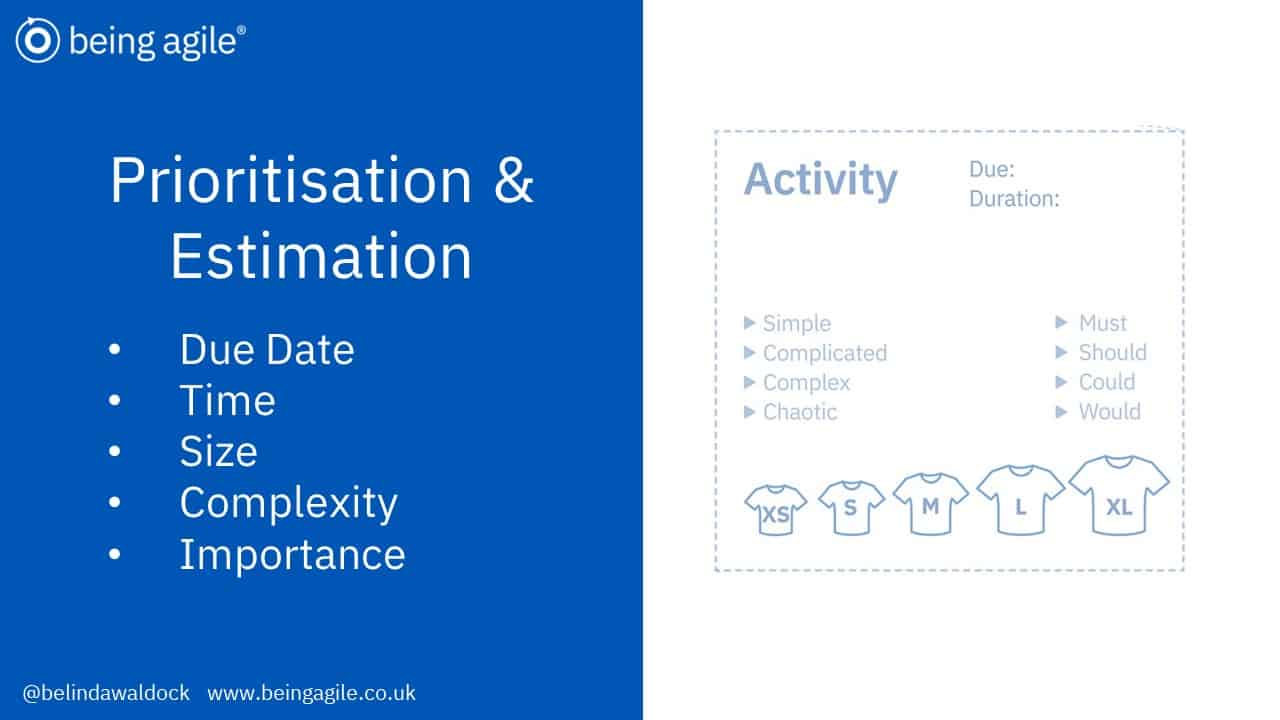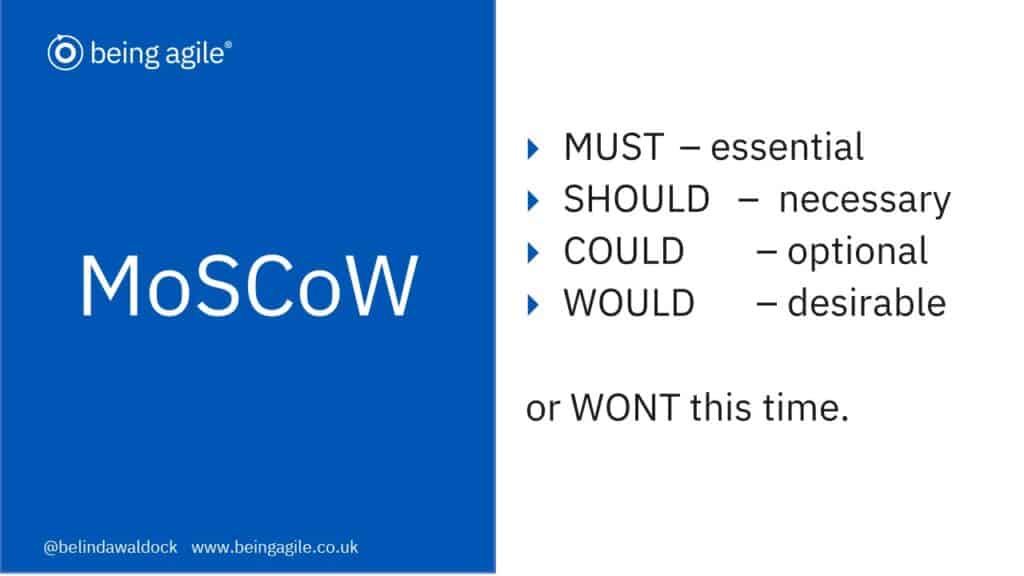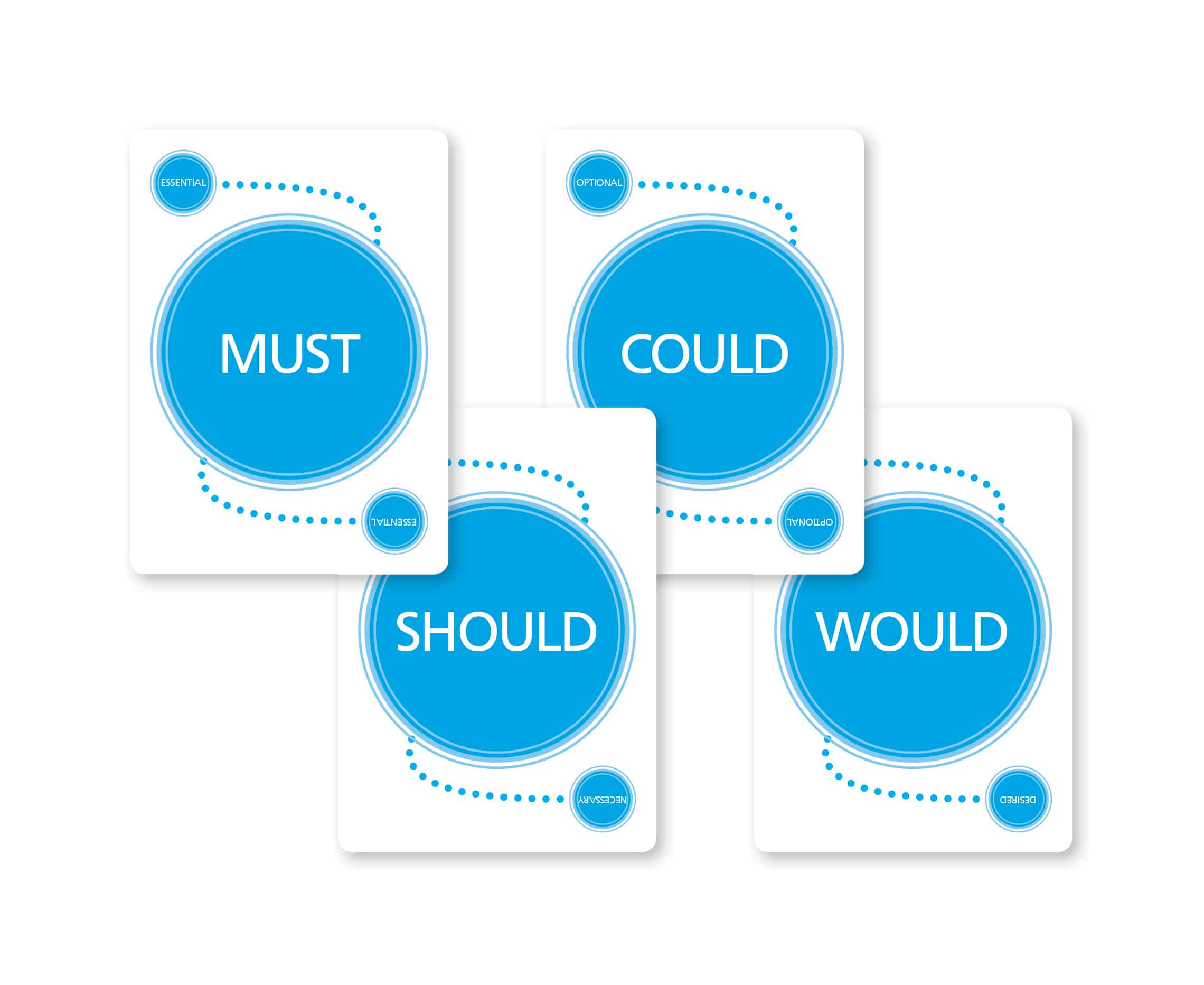In previous guides there are a number of simple tools to help us to prioritise and estimate items to inform sprint planning.
In the guide on the Being Agile Method we explored using the Agile Canvas to manage sprint of planned and newly received work on a day to day basis.
In this Agile Planning guide we will apply the estimation and prioritisation tools to help inform our sprint planning and decision making.
Here’s an example of the same board with estimations and prioritisations added

On this example can see 30 hours of work have been planned, plus 6 in the slack for the new task of a 40 hour week. The other new task is a would like to have and a large 20 hour task and placed in the future work for consideration for future sprints.
If it was insisted this other new task was completed as well in the current sprint we would have had to decide what 16 points we would stop doing, or find 16 hours more resource. Or, we could break down the task further and create a smaller activity such as research/mvp/testing to validate the idea further.
You-re not a Mary Poppin Bag! Read more – Creating a sustainable pace to maximise performance

On the agile canvas we have a number of additional tools to help us to prioritise, estimate and plan our work.
Using the matrix consider the complexity of each of your items and where it would be placed. Is it a simple known activity, is it complicated known but harder to predict, complex with unknown and uncertainty, or Chaotic activity which is ambiguous, uncertain and volatile.
Use this to inform your estimations and prioritisations, simple items will be easier to estimate, where complex and chaotic there are many unknowns that are hard to estimate.
What is the mix, are there a lot of simple items, a lot of complex ones, or a mix of all.
Consider any chaotic items you might be able to break down further to help identify simpler elements, and refine the chaotic elements.
Based on your review re-plan your current sprint if needed. Reorder your future work back log as appropriate.
First we will estimate the scale of our items on our agile board using either T-shirt sizes, or Points. You will need to define your T-Shirt sizes, you can start with the smallest and biggest items on your board to give you a range of XS to XXL.
Tip – Consider what each item includes, or excludes, and its complexity when making your estimates.
Once you have estimated the size/scale of your items, review your board.
Review your board and the estimates you have placed on your items.
Do complex/chaotic items need additional time for research, learning, testing and rework?
Is any additional time needed for sourcing resources, materials or preparing for the item to be actioned?
How much work is in your current sprint?
Compare this with how much time you have in your current sprint available? Is there enough time to complete the work? Do you have slack time within your sprint?
Based on your review re-plan your current sprint if needed.
Next, lets review the importance and priority of your items.
You can use the important/urgent matrix, and/or MoSCoW to rate the importance of your items.

Rate each item in the context of now, and the sprint you are planning, is this a must do item this sprint, or just as wouldn’t it be lovely if we got this done this sprint. Or is it something we definitely Wont do this sprint which we can eliminate.

Tip – if you find you have rated everything Must have reflect on whether it is absolutely a must have.
Tip – Remember importance and priority can change over time, due to deadlines, or changes that increase or decrease the items importance and priority.

Review your board and the priority rankings you have placed on your items.
What ranked items are currently in your scheduled sprint? Are these appropriate activities? Are you prioritising unimportant activities?
Based on your review re-plan your current sprint if needed. Reorder your future work back log as appropriate.
Tip – aim to include some slack time in your sprint for unplanned and unexpected activities.
Once you have applied these estimations and prioritisations your sprint plan should be much better informed, enabling you to make better decisions about what will and will not be included in your sprint.
This helps you to manage expectations that are often overly optimistic, ensure we don;t put ourselves into a sprint loop of perpetual failure due to over planning and not being able to get our work done. This leads to feeling overwhelmed, and can hit morale and motivation.
Its great to reflect on our estimations and predictions during our sprint retrospective. Were our time estimates too short or long, was it more complicated than we expected, or did we find a simple minimum viable solution. Did we prioritise unimportant items? Did we get the urgent/important, must do’s done? How much new work did we receive, what ratio did we action, how much did we park for future sprints? Do we need to do more/less, start/stop, how’s our mix and ratio of work?
What is agile — The Being Agile Mix
Digital Agile Boards — Agile Trello Board
Agile Planning – Prioritisation – Moscow & Urgent/Important
Agile Methods – T-Shirt Estimation – Estimating Size
Agile Planning – Considering complexity
If you, or your team find prioritisation and planning challenging, book a session below to review, identify the challenges, and find quick wins you can adopt straight away to overcome them.
Book a 30 minute conversation to chat more about being agile in your world!